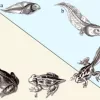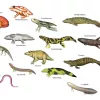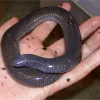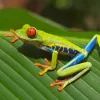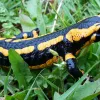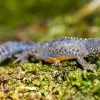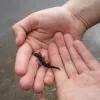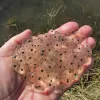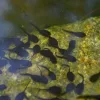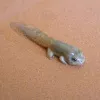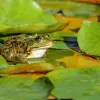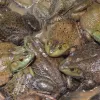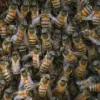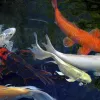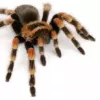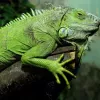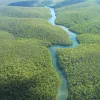Important update from TheSchoolRun
For the past 13 years, TheSchoolRun has been run by a small team of mums working from home, dedicated to providing quality educational resources to primary school parents. Unfortunately, rising supplier costs and falling revenue have made it impossible for us to continue operating, and we’ve had to make the difficult decision to close. The good news: We’ve arranged for another educational provider to take over many of our resources. These will be hosted on a new portal, where the content will be updated and expanded to support your child’s learning.
What this means for subscribers:
- Your subscription is still active, and for now, you can keep using the website as normal — just log in with your usual details to access all our articles and resources*.
- In a few months, all resources will move to the new portal. You’ll continue to have access there until your subscription ends. We’ll send you full details nearer the time.
- As a thank you for your support, we’ll also be sending you 16 primary school eBooks (worth £108.84) to download and keep.
A few changes to be aware of:
- The Learning Journey weekly email has ended, but your child’s plan will still be updated on your dashboard each Monday. Just log in to see the recommended worksheets.
- The 11+ weekly emails have now ended. We sent you all the remaining emails in the series at the end of March — please check your inbox (and spam folder) if you haven’t seen them. You can also follow the full programme here: 11+ Learning Journey.
If you have any questions, please contact us at [email protected]. Thank you for being part of our journey it’s been a privilege to support your family’s learning.
*If you need to reset your password, it will still work as usual. Please check your spam folder if the reset email doesn’t appear in your inbox.
Amphibians
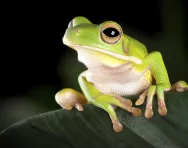
Amphibians are a diverse and exciting class of animals that include frogs, toads, salamanders, newts and caecilians.
Amphibians are vertebrate animals (have a backbone) like fish, mammals, reptiles and birds and hundreds of millions of years ago, amphibians became the first vertebrates to live on land. They are cold-blooded, which means their body temperature is regulated by their surrounding temperature. Amphibians are also characterised by their smooth, slimy skin and their lack of scales, feathers or hair. Their skin is permeable (which means air can pass through the skin) and many amphibians therefore breathe through their skin instead of through their lungs.
There are three types of amphibians: frogs, salamanders and caecilians.
Top 10 facts
- Generally, frogs have a short body, webbed fingers and toes, bulging eyes, and no tail. Frogs are good jumpers with long powerful legs. Toads are a type of frog. Two species of frogs are the American bullfrog and the poison dart frog.
- One way to tell a frog and a toad apart: frogs have smooth, clammy skin, while toads have drier, bumpy skin. Both frogs and toads lay their eggs in water, but toads spend more of their time on land than do frogs.
- Salamanders look a bit like lizards. They have skinny bodies, short legs, and long tails. Salamanders can re-grow lost limbs and other body parts. They like wet, moist areas like wetlands. A newt is a type of salamander.
- Caecilians are amphibians that don't have legs or arms. They look a lot like snakes or worms. Some of them can be long and reach lengths of over 4 feet. They have a strong skull and a pointed nose to help them burrow through dirt and mud.
- Nearly all amphibians are capable of producing poisons from their skin. Some of these poisons are easily smelled.
- More than 75 percent of all toad and frog species in the world live in tropical rainforests.
- Many frogs and salamanders take care of their young, either by guarding their eggs, carrying their young with them of by feeding tadpoles.
- All amphibians begin their life in water with gills and tails. As they grow, they develop lungs and legs for their life on land.
- There are more than 4,000 different kinds of amphibians.
- Most amphibians hop or crawl to the safety of the nearest water when danger threatens. Some also have glands in their skin that ooze poisonous or foul-tasting fluids when they are attacked. The common toad and a few other species confuse predators by puffing themselves up to look bigger.


Boost Your Child's Learning Today!
- Start your child on a tailored learning programme
- Get weekly English & maths resources sent direct to your inbox
- Keep your child's learning on track
Did you know?
- The term "amphibian" comes from the Greek word amphibious. Amphi means “both” and bios means “life”. Those names refer to the two lives that many amphibians live – when they hatch from their eggs, amphibians have gills so they can breathe in the water. They also have fins to help them swim, just like fish. Later, their bodies change, growing legs and lungs enabling them to live on the land.
- The most poisonous frog is the Golden Dart Frog, which has enough toxic secretions on its skin to kill up to 10 people. South American Indians use the skin secretions of poison dart frogs on the tips of their arrows to kill animals. The rough-skinned newt, common to Oregon in America, is very deadly. One college student several years ago swallowed one on a dare and he died because it gives off something known as a neurotoxin that paralysed his ability to breathe.
- The largest amphibian is the Chinese Giant Salamander. It can grow to 6 feet long and weigh 140 pounds.
- The largest frog is the Goliath Frog which can grow to 15 inches long (not counting the legs) and weigh over 8 pounds. The smallest amphibian is a frog called the paedophryne amauensis. It is also the world's smallest vertebrate animal. It is about 0.3 inches long.
- The best jumper is the South American Sharp-nosed Tree frog. It has been recorded to jump over 30 feet high – which is higher than a house!
- Colour helps amphibians find mates and hide from predators and prey. Some species are brightly coloured to tell predators that they are poisonous. Others are camouflaged to blend in with their surroundings.
- Some frogs (such as wood frogs and Spring Peepers) are able to freeze solid during the winter and survive!
- Frogs swallow their food whole. The size of what they can eat is determined by the size of their mouths and their stomach.
- A group of frogs can be called an army, chorus, or colony.
- A group of toads can be called a knot or a nest.
- A group of salamanders can be called a band.
Look through the gallery and see if you can spot the following:
- The life cycle of a frog
- Some common amphibians
- A caecilian
- A red-eyed tree frog
- A salamander
- A newt
- Tadpole to frog
Gallery
About
The life cycle of amphibians begins with an egg.
- A larva usually hatches from an egg (frog and toad larva are commonly referred to as tadpoles).
- The larva slowly develops into an adult by growing legs and arms and by developing lungs.
- The larval stage can last anywhere from 2 weeks to 2 years!
- Once the change is complete, the adult amphibian will emerge from the water and spend the majority of its life in the moist, surrounding habitat.
Not all amphibians go through the same metamorphosis process. Some frogs and salamanders, like the greenhouse frog and the red-backed salamander, lay their eggs on land. The larva develops inside the egg and the adult will hatch out of the egg on land. They will live their entire lives away from water. The marsupial frog puts her eggs in a pouch on her back. Within that pouch the larva develops into frogs. Once the larva has fully developed, it emerges from its protective pouch as a small frog.
Frogs and toads, also known as the tailless amphibians, live on every continent except Antarctica. Currently, there are more than 3,500 species of frogs worldwide. Because frogs are the only amphibians that can hear, they are also the only amphibians that have a voice box or larynx. During the summer, if there are frogs in the area you can often walk outside and hear frogs calling to establish their territory or to find a mate.
Salamanders usually have a long tail and four legs. Many people mistake salamanders for lizards and lizards for salamanders, but they are very different. Salamanders, unlike lizards, have smooth, slimy skin and a larva stage. Salamanders also do not have ears or a voice box. The 360 different species of salamanders worldwide are usually found in the cooler forested areas in the Northern Hemisphere.
Adult amphibians are carnivores and predators. They eat a variety of food including spiders, beetles, and worms. Some of them, like frogs, have long tongues with sticky ends that they flick out to catch their prey. The larvae of many amphibians mostly eat plants. Frogs have teeth, but toads do not. Most frogs have teeth on the upper jaw, yet they none on the lower jaw. Frogs' skin is slimy because they have protective skin secretions that ooze out of their bodies. Whereas frogs have smooth skin, toads' skin is rough and bumpy, due to special structures that secrete poisonous fluids from their skin.
Words to know:
Amphibian - a cold-blooded vertebrate that spends some time on land but must breed and develop into an adult in water
camouflaged - devices designed to conceal by imitating the colours of the surrounding environment
carnivores - an animal that eats other animals.
cold-blooded - describes an animal with an internal body temperature that varies according to the temperature of the surroundings
fins - a flexible organ, sometimes paddle-shaped or fan-shaped, extending from the body of a fish or other water animal and helping in balance and propulsion
gills - the organ that fish and some other water animals use to breathe, consisting of a membrane containing many blood vessels through which oxygen passes
glands - a cell or group of cells that secretes a specific substance
hatch - to emerge from an egg
larva - the immature, early-stage form of frogs and other animals that undergo marked changes during metamorphosis
metamorphosis - a complete or marked change in the form of an animal as it develops into an adult, e.g. the change from tadpole to frog or from caterpillar to butterfly
permeable - allowing liquids, gases, or magnetic fields to pass through
predators - a carnivorous animal that hunts, kills, and eats other animals in order to survive, or any other organism that behaves in a similar manner
prey - an animal or animals caught, killed, and eaten by another animal as food
regulated - to control something and bring it to the desired level
species - a kind, sort, or variety of something
toxic secretions – a poisonous substance discharged by a gland or organ
vertebrates - an animal with a segmented spinal column
Related Videos
Just for fun...
- Lots of frog education activities
- Make a newt jar
- Find out how to go pond dipping
- Make a sock tadpole and a frog mask
- Choose from lots of frog colouring pages
- Complete a frog jigsaw online
- Make an origami jumping frog
- A whole page of frog activities
- Seen through the eyes of a toad: explore habitats and come face-to-face with their predators!
Best children's books about amphibians
Find out more
- The BBC Bitesize guide to amphibians
- Amphibians explained for children
- All About Caecilians – the secretive legless amphibians
- All about salamanders and newts
- All about frogs and toads – facts and differences
- Understand the characteristics of amphibians and what makes them different to other animals
- Download a free Amphibian Survey Booklet from Froglife, packed with tips to help you survey for amphibians
- More information about amphibians for KS2 children
- Some more useful information and a quiz to see how much you’ve learnt
- Read issues of Natterchat, Froglife's magazine about amphibians and reptiles around the world
- Listen to the calls of some of the frogs who live in Madagascar
See for yourself
- Make your own pond and encourage wildlife for yourself
- Visit a nature centre in the UK to talk to experts and find out more
- Listen to recordings of amphibian sounds, including a frog chorus
- Make your own amphibian-friendly habitat! Download the Big or Small, Ponds for All booklet, a step-by-step guide to creating the perfect pond, large or small, from Wild About Gardens
